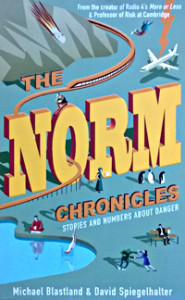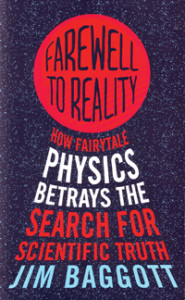Why Does the World Exist?
One Man’s Quest for the Big Answer
by Jim Holt
Published by Profile Books www.profilebooks.com
Why is there something rather than nothing? Such an unassuming little question from the outside but once opened, it expands, Tardis-like, into a vast maze of speculation and hypothesis at – or arguably, beyond – the cutting edge of physics and philosophy.
After a brief history of nothing (a surprisingly recent concept) Holt – philosopher and essayist for the New York Times – gives us a concise and highly readable tour from Aristotle through Sartre, Schopenhauer, Heidegger, Wittgenstein et al. Fortunately Holt doesn’t just stick to people most of us know best as lyrics from a Python song. He brings us up to date with the latest physics and philosophy and hops between Paris, New York and Oxford interviewing some of our leading scientists, philosophers & writers. Along the way Holt reveals his personal flirtation with ‘nothingness’ as both his dog and his mother died from cancer while he researched the book (hint – if you’ve ever lost a parent or a pet don’t read these bits on the train). In just 279 pages Holt does an excellent job covering all the bases in sufficient detail for the reader to get at least the gist of the (sometimes quite obtuse) arguments put forth.
So; where do the world’s big thinkers stand on the big question?
On the physics front there’s cosmology’s heavy hitter, Stephen Hawking with quantum fluctuations in the vacuum expanding to produce the observable Universe. Time starts at the Big Bang so ‘before’ is a meaningless concept and negative gravitational force balances out positive expansion giving the Universe a net energy balance of zero.
So; overall there is nothing, it’s just unevenly distributed.
This doesn’t sit well with all physicists who suggest the laws of quantum mechanics themselves need explaining. Perhaps multiple universes with every possible law are the answer? Holt outlines multiple ‘Multiverse’ theories though, with virtually no actual science to back them up, none are really convincing
With this big a question, mysticism can pop up where you’d least expect it. Roger Penrose, perhaps the world’s foremost mathematical physicist expounds his view that the Universe is a reflection of a literal ‘infinite realm’ of ‘perfect mathematical forms’. A position shared, according to Holt, by two thirds of mathematicians. It’s enough to give any Scientific Humanist a crisis of faith.
OK, the ship of science seems to be floundering on the rocks a bit here. How do we fare cast on the wild and wooly shores of philosophy?
Unsurprisingly, God gets a lot of the credit (or blame). From Anselm’s ontological argument for the existence of God that convince the young Bertrand Russell we move to modern day theologian Richard Swinburne, who claims to have used probability theory to ‘prove’ the logical existence of the Biblical God. His adversary, Adolph Grunbaum – greatest living philosopher of science according to Holt – is utterly dismissive of such reasoning; “What could be more commonplace than that something or other does exist?”
John Leslie, physicist turned priest, argues for the ethical necessity of the world and Derek Parfit, ‘Prize Fellow’ at All Souls, proposes a system of ‘Selectors’ while being “appalled at some of the crazy views contemporary philosophers argue for”.
Well. Quite.
It’s possible that somewhere in these pages, between God and quantum foam, you might find an answer that satisfies. Holt does, though I suspect his is an answer only a philosophy major could love. My money is on Martin Amis. When asked why is there something rather than nothing he responded “I’d say we’re at least five Einsteins away from answering that question”.
Optimist.









